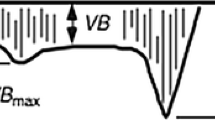Abstract
Thermally enhanced machining (TEM) is a method to improve the machinability of hard materials. In the literature, few investigations focus on the analytical modeling of machinability characteristics in the TEM. For this reason, this research tries to present theoretical models to better understanding of cutting forces and flank wear in the TEM process. The goal of this study is to present a methodology for predicting cutting forces and tool flank wear during thermally enhanced turning of hardened steel AISI 4140. A mechanistic model is developed to estimate the cutting forces under different TEM conditions by considering shear stresses in the primary and secondary shear zones as well as applied forces on the tool edge. A flank wear model is developed to estimate abrasion, adhesion, and diffusion wears by attention to some considerations such as the effect of TEM on the reduction of material hardness, thrust force, and the effect of multi-layer coated carbide tools on flank wear. Comprehensive experimental results are classified into two groups for calibration as well as verification of analytical models. By precise application of external concentrated heat source, the temperature in the shear plane and frictional area increases which finally leads to reduction of cutting forces. In other words, rising of uncut chip about 300 °C results in decreasing of shear stress in the frictional area about 200 MPa. Abrasive and adhesive were the dominant wear type in high levels of cutting speed and uncut chip temperature, respectively. The effect of cutting speed decreased in high value of uncut chip thickness due to the reduction of particle hardness in comparing with the hardness of tool coating.
Similar content being viewed by others
References
Chinchanikar S, Choudhury SK (2015) Machining of hardened steel—experimental investigations, performance modeling and cooling techniques: a review. Int J Mach Tools Mf 89:95–109
Scheffer C, KratzH HPS, Klocke K (2003) Development of a tool wear-monitoring system for hard turning. Int J Mach Tools Mf 43:973–985
Sun S, Brandt M, Dargusch MS (2010) Thermally enhanced machining of hard-to-machine materials—a review. Int J Mach Tools Mf 50:663–680
Kitagawa T, Meakawa K (1990) Plasma hot machining for new engineering materials. Wear 139:251–267
Leshock CE, Kim JN, Shin YC (2001) Plasma enhanced machining of Inconel 718: modeling of workpiece temperature with plasma heating and experimental results. Int J Mach Tools Mf 41:877–897
Lacalle LN, Sa’nchez JA, Lamikiz A, Celaya A (2004) Plasma assisted milling of heat-resistant superalloys. J Manuf Sci Eng 126:274–285
Ozler L, Inan A, Ozel C (2001) Theoretical and experimental determination of tool life in hot machining of austenitic manganese steel. Int J Mach Tools Mf 41:163–172
Ding H, Shin YC (2010) Laser-assisted machining of hardened steel parts with surface integrity analysis. Int J Mach Tools Mf 50:106–114
Chou YK, Song H (2004) Tool nose radius effects on finish hard turning. J Mater Process Technol 148:259–268
Lee TH (2011) Development of a theoretical model to predict cutting forces for hard machining. Int J Precis Eng Manuf 12–5:775–782
Huang Y, Liang SY (2005) Modeling of cutting forces under hard turning conditions considering tool wear effect. J Manuf Sci Eng 127:262–270
Huang Y, Liang SY (2003) Cutting forces modeling considering the effect of tool thermal property—application to CBN hard turning. Int J Mach Tools Mf 43:307–315
Zhu D, Zhang X, Ding H (2013) Tool wear characteristics in machining of nickel-based super alloys. Int J Mach Tools Mf 64:60–77
Singh D, Rao PV (2010) Flank wear prediction of ceramic tools in hard turning. Int J Adv Manuf Tech 50:479–493
Huang Y, Liang SY (2004) Modeling of CBN tool flank wear progression in finish hard turning. J Manuf Sci Eng 126(1):98–106
Tian Y, Shin YC (2006) Thermal modeling for laser-assisted machining of silicon nitride ceramics with complex features. J Manuf Sci Eng 128:425–434
Farahnakian M, Razfar MR (2014) Experimental study on hybrid ultrasonic and plasma aided turning of hardened steel AISI 4140. Mater Manuf Process 29(5):550–556
Shatla M, Kerk C, Altan T (2001) Process modeling in machining, part 1: determination of flow stress data. Int J Mach Tools Mf 41:1511–1534
Oxley PLB (1989) Mechanics of machining, an analytical approach to assessing machinability. Ellis Horwood, West Sussex
Childs THC, Maekawa K, Obikawa T, Yamane Y (2000) Metal machining. Theory and Application, Arnold, London
Arcona C, Dow TA (1998) An empirical tool force model for precision machining. J Manuf Sci Eng 120–4:700–707
Arsecularatne JA, Mathew P (2000) The Oxley modeling approach, its applications and future directions. Mach Sci Technol 4:363–397
Sandvik Corporation, Technical guide, 2009
Souther TG (2003) Study of shear localization using a novel test specimen loading in a split-Hopkinson compression bar, MsC Thesis, Texas Tech University
Wong T, Kim W, Kwon P (2004) Experimental support for a model-based prediction of tool wear. Wear 257(7–8):790–798
Kramer BM, Judd PK (1985) Computational design of wear coatings. J Vac Sci Technol A 3(6):2439–2444
Lee M (1983) High temperature hardness of tungsten carbide. Metall Trans A 14:1625–1629
Jindal PC, Santhanam AT, Schleinkofer U, Shuster AF (1999) Performance of PVD TiN, TiCN, and TiAlN coated cemented carbide tools in turning. Int J Refract Met Hard Mater 17(1–3):163–170
Cook NH (1973) Tool wear and tool life. J Manuf Sci Eng 95(1973):931–938
Author information
Authors and Affiliations
Corresponding author
Rights and permissions
About this article
Cite this article
Farahnakian, M., Elhami, S., Daneshpajooh, H. et al. Mechanistic modeling of cutting forces and tool flank wear in the thermally enhanced turning of hardened steel. Int J Adv Manuf Technol 88, 2969–2983 (2017). https://doi.org/10.1007/s00170-016-9004-7
Received:
Accepted:
Published:
Issue Date:
DOI: https://doi.org/10.1007/s00170-016-9004-7



